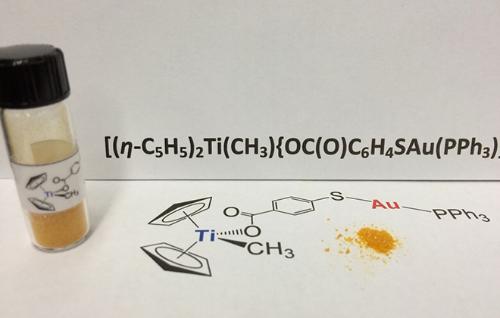
Written by: Kristen Consillio, Star Advertiser, September 23, 2015 @ 1:30am
A researcher at the University of Hawaii Cancer Center has developed a potential new drug that destroys cells with kidney cancer, one of the top 10 cancers affecting Hawaii residents.
Dr. Joe Ramos, director of the cancer biology program at the UH Cancer Center, and Maria Contel, an associate professor in the Department of Chemistry at Brooklyn College, have designed a titanium-and gold-based compound that destroys kidney cancer cells while leaving normal cells unharmed.
The discovery could lead to a better way of treating the potentially deadly disease with more potent and less toxic therapies to improve the quality of life of cancer patients, UH said in a news release.
“Kidney cancer is frequently diagnosed in the late stages when there are minimal options for treating the deadly disease. The hope is that this could potentially lead to new therapies that would extend the life span of cancer patients who are diagnosed late,” Ramos said.
The titanium-gold compound does not attack DNA in the manner of previous metallic compounds that fight cancer. Instead, it kills diseased cells by blocking a group of enzymes that support cancer cells and metastasis.
An estimated 61,560 people will be diagnosed with the disease nationwide this year, according to the American Cancer Society.
The researchers’ findings, recently published in the medical journal Chemical Science, show that the interaction of the two metals with cancer cells reduces the size of tumors. The compound also performed better in pre-clinical models than the U.S. Food and Drug Administration-approved platinum drug, Cisplatin, used mostly for ovarian cancers, Ramos said.
“(There’s) a lot about it that makes it really promising,” he added. “There are only a limited number of drug leads for kidney cancers. We don’t need a lot of it for it to work well. That’s the important thing.”
Researchers hope to bring the drug to the commercial market in five to 10 years. They are currently in the pre-clinical phase, testing the dosages in animals over longer periods. They intend to seek funding to begin human clinical trials in the next few years. The researchers won a three-year $350,000 grant from the National Institutes of Health for pre-clinical trials.
“We’re going to continue with another year of pre-clinical trials to make sure we know how the drug metabolizes or stays in the body long enough to have an effect,” Ramos said. “Once we have that information then we can start talking with the industry very aggressively.”